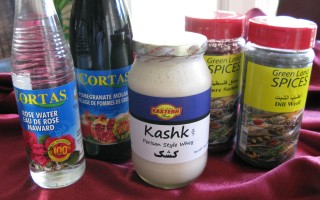
A few days ago I visited one of my all time favorite restaurants in Sandy Springs, Fanoos Persian cuisine. I had spoken to the owner, Jalal on several occasions before asking him to share some of his delicious Iranian recipes with me. This turned out to be my lucky night! Jalal gave me the pleasure […]
view the post

I celebrated a dear friend’s birthday this past weekend at a Persian restaurant called Fanoos located in Sandy Springs, a suburb of Atlanta. I have been to this place a few times before and over time, have come to know its owner Jalal. Jalal moved from Northern Iran to the US over 30 years ago. […]
view the post